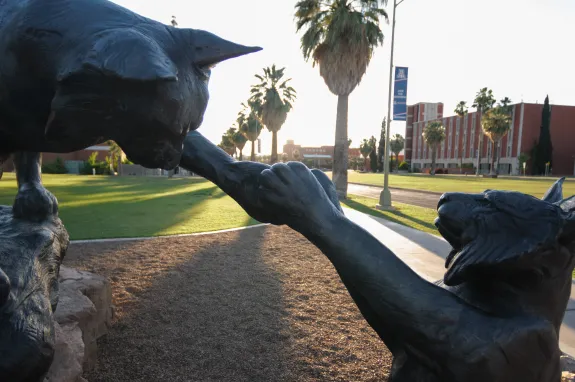
Program Structure and Highlights
Through VIP, student teams are embedded in faculty research projects. Faculty are attracted to the program for a variety of reasons. In some cases they already work with undergraduates, and VIP provides a framework for more effective management. Others want to work with students from other departments, and VIP draws students from across campus with its multidisciplinary focus.
Why VIP?
Through VIP, student teams are embedded in faculty projects in research and creative inquiry (RCI). Faculty are attracted to the program for a variety of reasons. In some cases they already work with undergraduates, and VIP provides a framework for more effective management. Others want to work with students from other departments, and VIP recruits students from across campus (and most teams are multidisciplinary). Still others seek a low-stakes environment in which to try new ideas and engage VIP students in project support. Additionally, VIP teams can serve as "broader impacts" or educational components required by some sponsoring agencies. What all teams have in common is that they are established at the request of faculty. Teams evolve with their faculty member's RCI and become integral parts of the instructors' portfolios. While faculty provide the materials and supplies needed to run the team, there are no programmatic fees.
Students can participate in VIP for multiple semesters, with returning students taking on additional technical and/or leadership responsibilities within their teams. This lessens the time faculty spend onboarding new students, freeing them to focus on higher-order work. Maintaining a team of 10 to 20 students ensures enough students return each semester to maintain continuity.
VIP Projects
- Defined by faculty advisor(s)
- Long-term: on the order of three to five years
- Large-scale: Large enough for eight to 20 students to work on, at one to six credits per semester
- Typically multidisciplinary
VIP Team Composition
- One or more faculty advisors who define the project, lead the team, and grade students
Graduate students
- Mentors typically earning one to three credits
Undergraduates
- Team members who gradually take on more mentoring responsibility as they return for more semesters
- Credit structure can be developed by the faculty advisor(s) to fit the scope of their project or follow the suggested structure below:
- First- and second-year students: one credit
- Juniors: one to two credits
- Seniors: one to three credits
- Independent studies: one to six credits
- Capstones: one to six credits
- Faculty advisors can also opt to create paid work opportunities for undergraduate team members.

